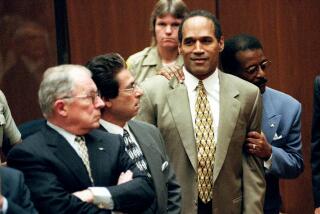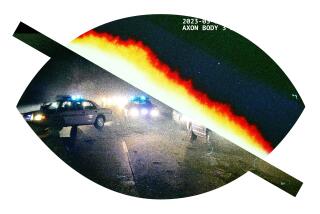Videotape Evidence
- Share via
Now that the King verdict is in, it may be easier to dispel some major misconceptions about the use of videotape evidence. Many experts claimed that slow motion and freeze framing “distort” reality and must be bad techniques.
Experts denounce these techniques as though the jury were watching a fiction film where slow-motion violence is all they saw. The courtroom, though, is not a movie theater. The jury must always weigh each and every manipulation of the original videotape against the fundamental question: What actually happened to Rodney King and why? This requirement to weigh the evidence and come to a clear conclusion gives these techniques an entirely different purpose: They are analytic, not aesthetic.
When what we watch is actual violence, slow motion and freeze framing identify the application and effect of that violence graphically. This can be profoundly disturbing, not soothing. The violence is not faked, nor is it choreographed, nor edited to hide the fakery. We are not left with slow-motion renditions of staged violence but with a detailed dissection of actual events, still available for real time viewing.
The videotape debate has been a major obfuscation so far. The issue should be the limitations of any recorded image as legal evidence. Such images can never show intent or motivation. This must be determined by other means. Images, whether in real time, slow motion or freeze frame, can, however, help corroborate specific claims about what happened. The jury is there to scrutinize such claims with the utmost care. Their most valuable tools are the very techniques that most experts have resoundingly denounced as distortions.
WILLIAM J. NICHOLS
Santa Cruz
Nichols is visiting professor at UC Santa Cruz and author of “Representing Reality: Issues and Concepts in Documentary.”






